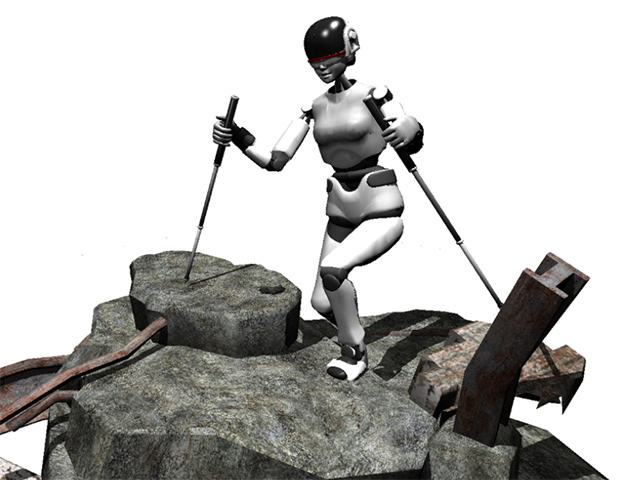During the ICRA (IEEE International Conference on Robotics and Automation) this year, Stanford researchers presented the SupraPed robots: bots that use something that looks like ski poles to navigate over rough or uneven terrain.
The bots, which exist only in concept at the moment, will supposedly be equipped with special trekking poles, which their creators have packed with sensors. According to the researchers, the sensors transform “biped humanoids into tripeds or quadrupeds or more generally, SupraPeds.” In other words, by using the poles sort of like extra limbs, the bots will be able to steady themselves in order to navigate smoothly through rough or uneven terrain, like a disaster site.

Surprisingly, it seems as though robots have much more difficulty walking over uneven terrain as humans do—or they did until the SupraPeds, at least. While we've seen robots that can move easily over flat surfaces, rougher environments require a combination of both physical balance and mental awareness, a combination that’s been difficult to manufacture in ‘bots.
The SupraPed robots, with their smart poles, complex 3D vision system, tactile sensing abilities, and intricate programming, seem to be the first robots that might come close to fixing that problem, at least according to this simulation:
There’s no set timeframe for when this technology will actually be put into use—if it ever actually is—but it’s an intriguing approach to the problem and one that should be explored. With the DARPA Robotics Challenge finals coming up, we’re sure to see even more brilliant ideas in this field,.
Source Discovery
Advertisement





